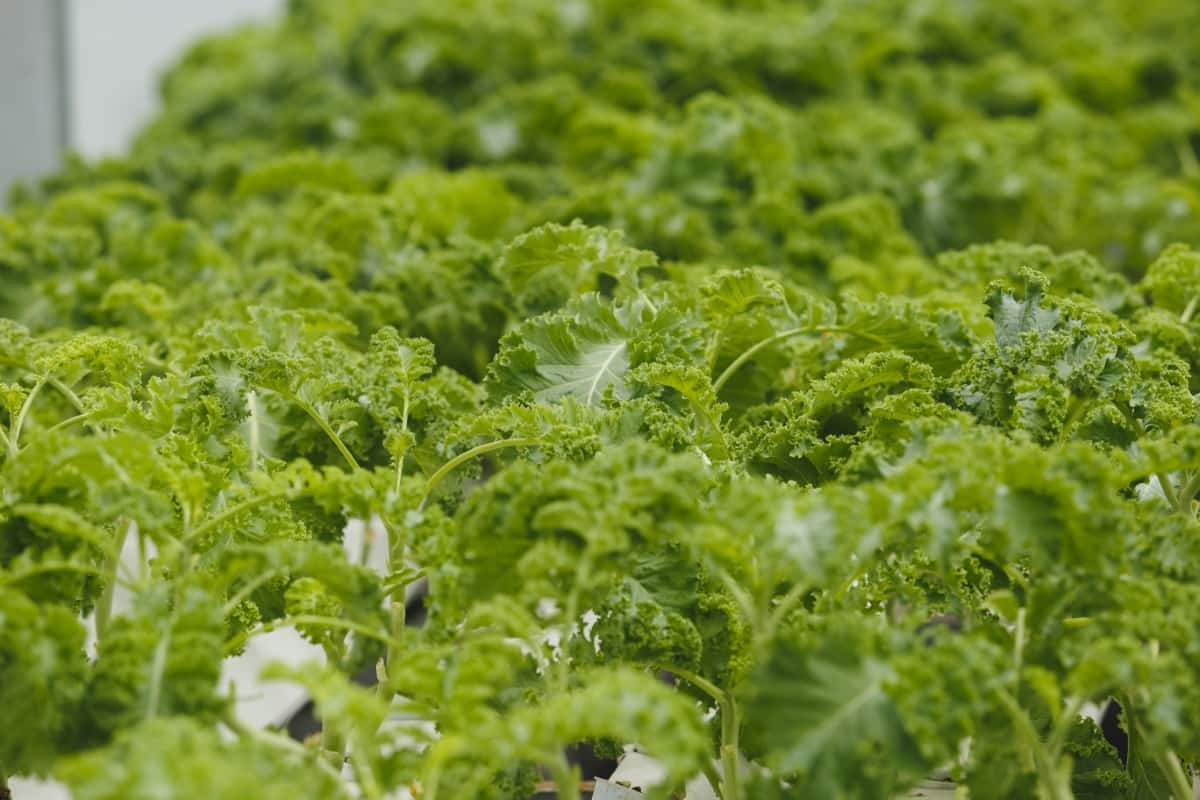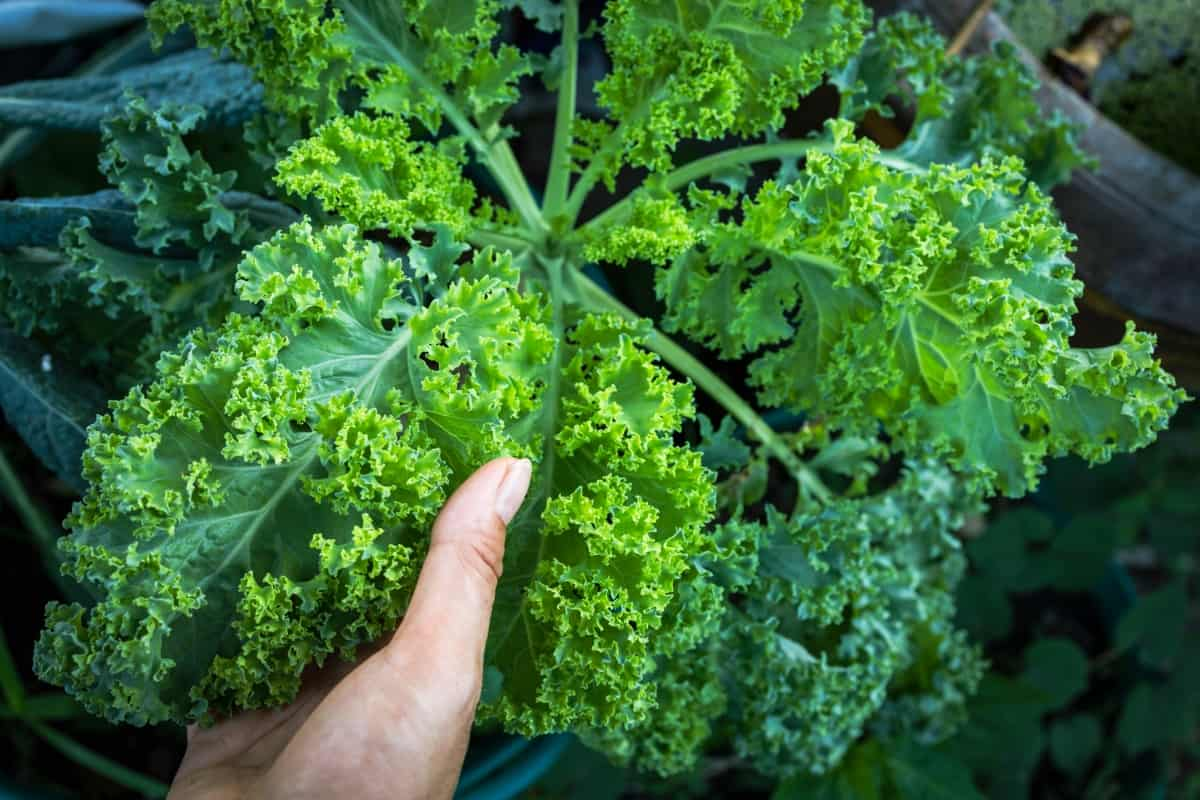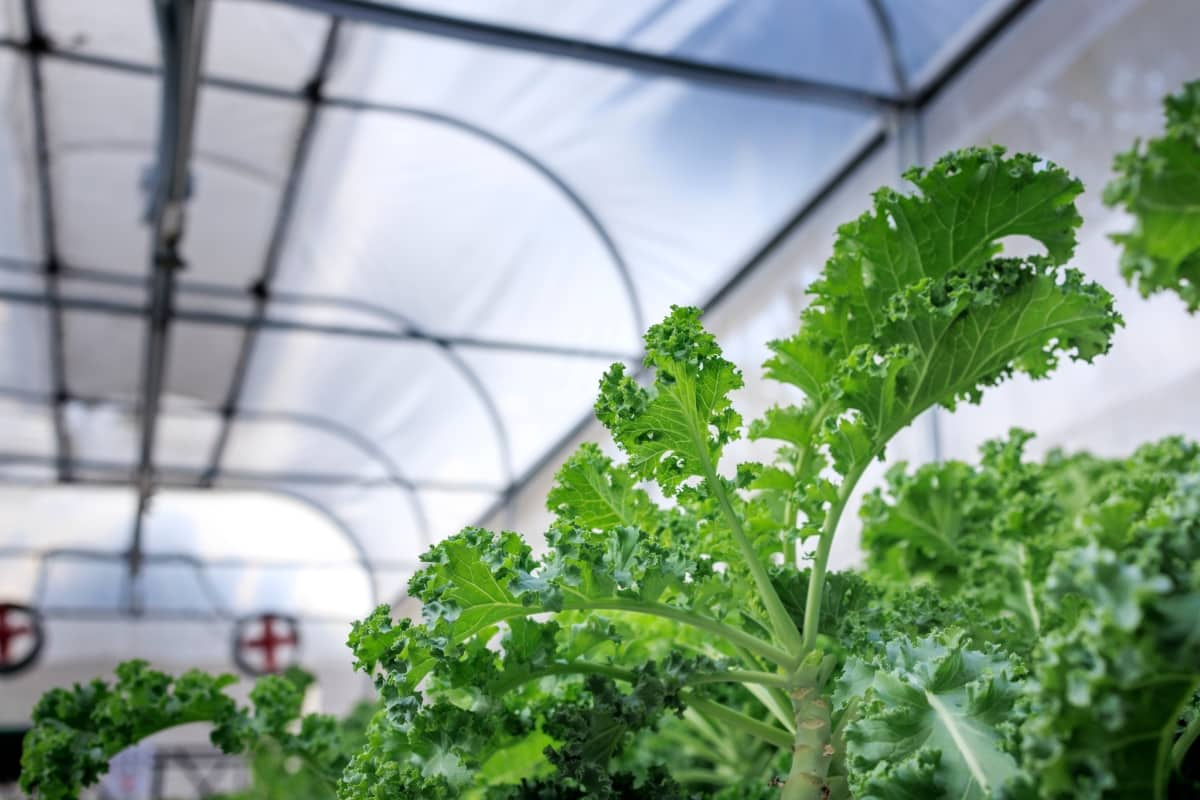Aquaponics is a sustainable and efficient method that combines aquaculture and hydroponics, creating a symbiotic environment where fish waste supplies essential nutrients for plant growth. This innovative system minimizes water usage and eliminates the need for traditional soil, making it an eco-friendly choice for cultivating leafy vegetables. Growing Kale in aquaponics offers a sustainable and efficient way to cultivate this superfood. Here are nine essential steps to guide you through the process of growing Kale in aquaponics, from planting to harvest.

9 Essential Steps to Grow Kale in Aquaponics
Selecting the Right Aquaponic System for Kale Cultivation
Choosing the appropriate aquaponic system for kale cultivation involves considering the specific needs of Kale and the scale of your operation. For smaller setups, media-filled beds or nutrient film techniques (NFT) are suitable. Media-filled beds utilize grow beds filled with a growing medium where Kale can anchor its roots, while NFT systems circulate nutrient-rich water through shallow channels. These systems are cost-effective and ideal for home or small-scale kale production.
For larger commercial ventures, deep water culture (DWC) or raft systems may be more suitable. DWC systems submerge kale roots directly into nutrient-rich water, promoting efficient nutrient absorption. Raft systems involve floating rafts with kale plants on the water’s surface. Both DWC and raft systems are well-suited for large-scale, high-density kale cultivation.
Choosing the Best Varieties of Kale for Aquaponic Farming
Consider varieties such as Curly Kale (e.g., Winterbor or Redbor) and Lacinato Kale (also known as Dinosaur Kale) for their adaptability to aquaponic systems. These varieties thrive in nutrient-rich water, exhibit sturdy growth, and resist common pests. Curly Kale’s textured leaves provide surface area for beneficial bacteria, aiding in the nitrogen cycle.
Lacinato Kale’s flat, dark leaves offer a unique taste and are less prone to certain diseases. Additionally, both varieties are rich in essential nutrients and can be harvested continually. Prioritize selecting kale varieties that align with your aquaponic setup, ensuring a sustainable and productive system.
Essential Water Quality Parameters for Kale Growth in Aquaponics
For optimal kale growth in aquaponics, key water quality parameters must be monitored. pH levels should be maintained between 6.0 to 7.5 to ensure nutrient availability. Ammonia and nitrate levels must be controlled, with ammonia kept below 0.5 ppm to prevent toxicity. Dissolved oxygen levels need to be maintained above 5 mg/L to support plant respiration.
Temperature should range between 18-24°C for optimal kale development. Electrical conductivity (EC) should be monitored to ensure a balanced nutrient solution. Regular water testing and adjustments are essential to create a stable and nutrient-rich environment for successful kale cultivation in aquaponics.
Providing Essential Nutrients for Aquaponic Kale
To optimize kale growth in aquaponics, ensure a balanced nutrient supply. Nitrogen-rich fish waste serves as a primary fertilizer, promoting leafy green development. Supplement with iron, potassium, and trace minerals to prevent deficiencies. Maintain a pH level range between 6.0 and 7.5 for nutrient availability. Adequate dissolved oxygen levels support fish health and nutrient cycling. Employ a well-designed aquaponic system, coupling fish production with hydroponic components for nutrient absorption. Regularly monitor water quality parameters, adjusting as needed.
In case you missed it: Kale Companion Plants: What to Grow with Kale and What Not to Grow with Kale

Lighting Requirements for Growing Kale in an Aquaponic System
For growing Kale in an aquaponic system, ensure adequate lighting with a minimum of 12-16 hours of light per day. Use full-spectrum LED lights, as they mimic natural sunlight and promote plant growth. Position lights 12-18 inches above the Kale to prevent stretching and maintain a temperature of 18-24°C.
Adjust light intensity according to plant growth stages, providing 200-400 µmol/m²/s during the vegetative phase and 400-600 µmol/m²/s during flowering. Monitor light duration, intensity, and spectrum to optimize photosynthesis, ensuring a thriving kale crop in the aquaponic environment.
Temperature and Climate Control for Optimal Kale Growth
In aquaponics systems, water temperature is paramount; aim for a range of 18-24°C for optimal nutrient absorption and metabolic activity in both plants and fish. Ensure consistent water circulation to distribute nutrients efficiently. Employ a reliable heating system during colder periods and shading mechanisms in warmer climates to mitigate temperature fluctuations.
Adequate ventilation prevents humidity buildup, reducing the risk of disease. Monitoring pH levels is essential; maintain a slightly acidic to neutral range of 6.0-7.5 for nutrient availability. Implementing these temperature and climate controls fosters a conducive environment for kale growth in aquaponics, promoting robust plant development and a thriving symbiotic relationship between plants and fish.
Planting and Spacing: Best Practices for Kale in Aquaponics
Begin by selecting healthy kale seedlings or germinating seeds in a separate nursery system. When transplanting, ensure a spacing of 12 to 18 inches between kale plants to facilitate proper air circulation and nutrient absorption. Use a nutrient-rich aquaponic system, where fish waste provides essential nutrients for plant growth. Maintain a pH level range between 6.0 and 7.5 for optimal nutrient uptake. Regularly monitor water quality parameters like ammonia and nitrate levels. Employ a deep-water culture or media bed aquaponic system to support Kale’s root development.
In case you missed it: 9 Common Problems With Kale Plants: Treatment and Solutions

Maintenance and Care for Kale in Aquaponics
- Monitor and maintain optimal water parameters (pH 6.0-7., temperature 18-24°C) for kale growth.
- Ensure appropriate nutrient levels, especially nitrogen, phosphorus, and potassium, through regular testing and adjustments.
- Provide adequate lighting with a minimum of 12-16 hours of sunlight or artificial light per day for robust photosynthesis.
- Trim older or damaged leaves to promote new growth and maintain overall plant health.
- Implement pest prevention measures such as introducing beneficial insects or using organic pesticides to avoid infestations.
- Clean and maintain aquaponic components regularly, including filters and pumps, to ensure optimal system performance.
- Watch for disease signs like powdery mildew; address promptly with organic remedies or fungicides if needed.
- Implement measures to control water and ambient temperatures, as Kale thrives in a cooler environment.
When and How to Harvest Kale in Aquaponics
Harvest kale in aquaponics when leaves reach a desirable size, typically around 8-10 inches. Begin harvesting outer leaves, allowing inner ones to continue growing. Use clean, sharp scissors to cut leaves near the base, ensuring the plant’s central growth point (apical meristem) remains intact for continued production.
Harvest regularly, promoting a continuous yield. Consider plant health indicators like vibrant color and firm texture. Monitor the nutrient levels in the aquaponic system to ensure optimal kale growth. Harvesting mature leaves encourages new growth and sustains a thriving, nutrient-rich aquaponic environment.
In case you missed it: Unraveling the 7 Causes of Dying Kale and How to Fix It?

Conclusion
By following the steps discussed above, you can successfully cultivate Kale in your aquaponic system and enjoy a continuous harvest of fresh, nutrient-dense greens. Stay attentive to the needs of both your plants and fish, and make adjustments as needed to ensure a thriving and sustainable aquaponic garden. Experiment with different kale varieties and growing techniques to find what works best for your specific setup. Happy growing!
- Feed Your Flock for Less: Top 10 Tips to Save on Chicken Feed
- Ultimate Guide to Ossabaw Island Hog: Breeding, Raising, Diet, and Care
- Hatching Answers: The Top 10 Reasons Your Chickens Aren’t Laying Eggs
- Eggs and Economics: Breaking Down the Cost of Raising Backyard Chickens
- Defend Your Greens: Proven Methods to Keep Iguanas Out of Your Garden
- Ultimate Guide to Cinnamon Queen Chicken: A Comprehensive Guide for Beginners
- Ultimate Guide to California Tan Chicken: Breeding, Raising, Diet, Egg-Production and Care
- Ultimate Guide to Marsh Daisy Chicken: Breeding, Raising, Diet, and Care
- 10 Types of Chicken Farming Businesses You Can Start for Profits